It is undeniable that video consumption has become more fragmented in recent years. Ad Alliance collaborated with both DVJ Insights and Unravel Neuromarketing Research to examine how the impact of video advertising varies depending on the device and platform it is consumed on. The results revealed large discrepancies.
The power of device
The research into the impact of advertising on various devices proves a better message delivery and higher brand activation when advertising on the big screen. The partnership with DVJ Insights looked at how effective video advertising was across a range of devices: smartphones, tablets, laptops/desktop computers and TV-screens. The following KPIs were used to measure this effectiveness: brand impact, message transfer, creative evaluation, attitude towards brand and brand consideration.
The findings show that brand recall, whether top-of-mind, spontaneous or helped, is the same for all devices. However, a larger screen shows significantly better results when it comes to message transfer, meaning that consumers remember the message better after seeing an advert on a TV-screen (51% remember) compared to a smaller one (37% and 38% respectively for tablets and laptops). Similarly, the TV-screen ensures higher brand activation with a more positive attitude towards the brand, a higher brand consideration and purchase intent. Adverts shown on TV-screens are seen as much more amusing and relevant than those shown on any other device. In addition to this, 36% of consumers have the intention of buying a product advertised on TV-screens compared to just 18% if the same product is advertised on a smartphone or tablet device.
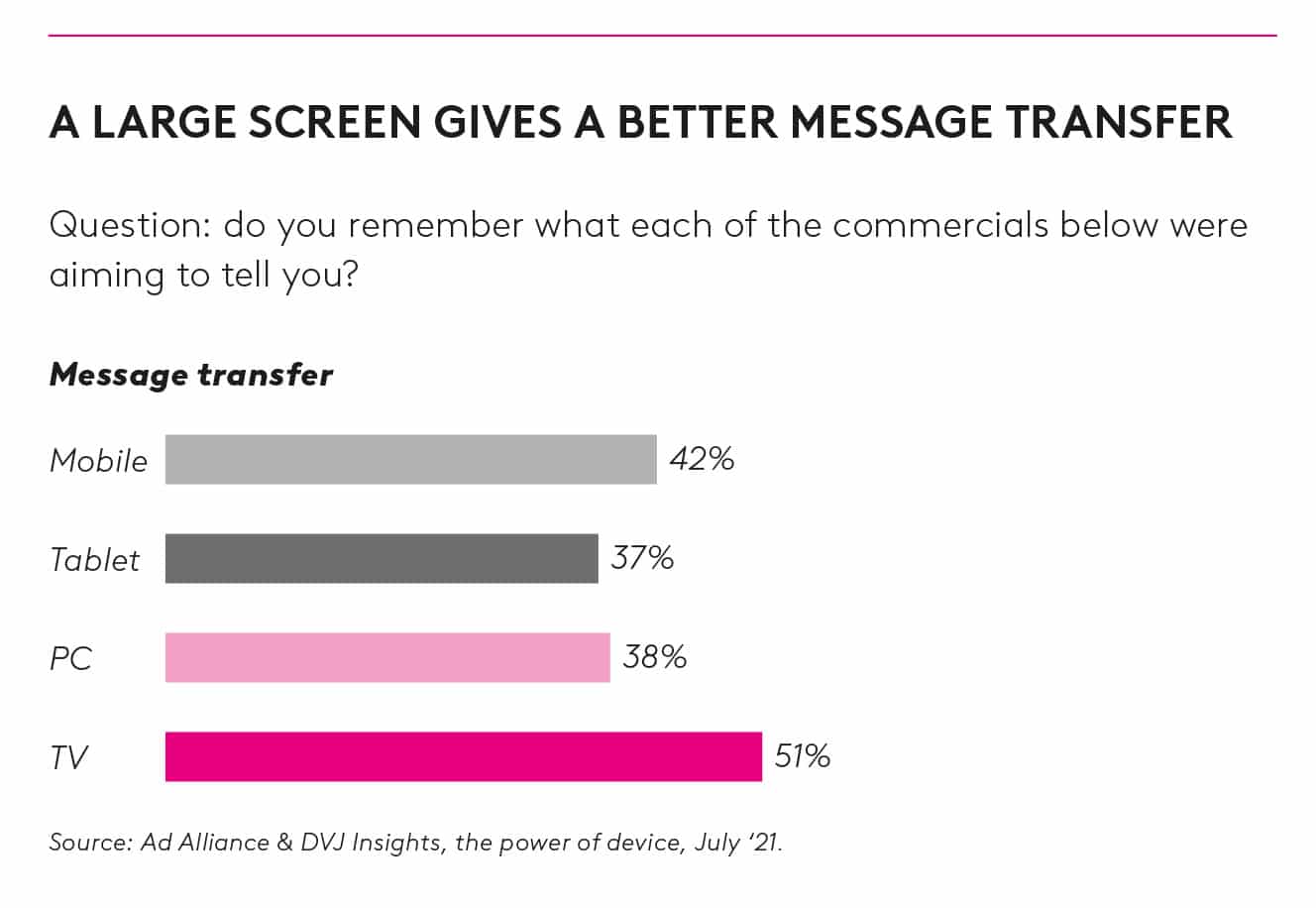
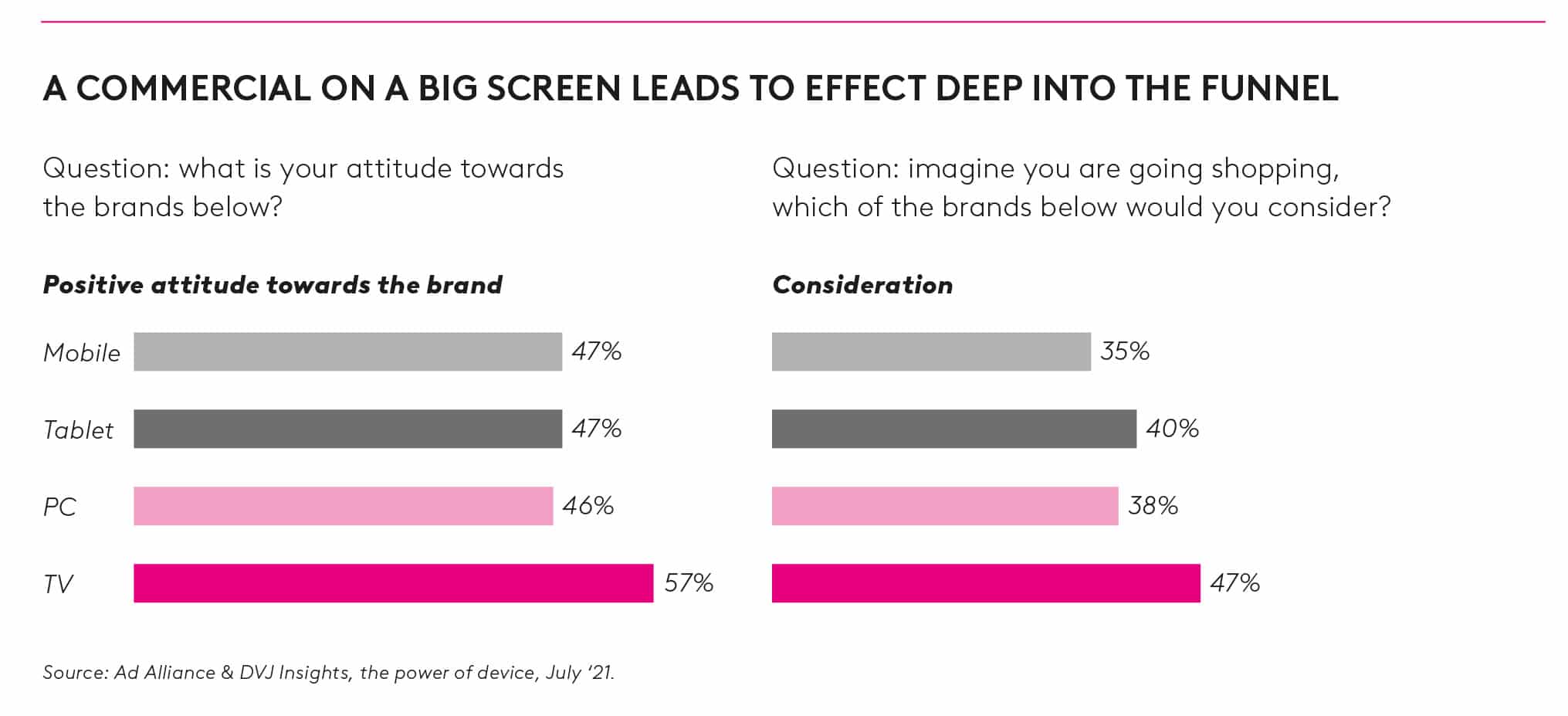
The power of platform
Research into the effectiveness of advertising on platforms YouTube, Videoland and TV on the big screen. Ad Alliance worked with Unravel Neuromarketing Research to show how these three platforms perform based on important parameters such as attention to the advert, processing in the brain and memory and valuation. Eye tracking calculated what people were looking at to the millisecond to measure their attention to adverts.
CONSUMERS REMEMBER
THE MESSAGE
BETTER AFTER SEEING
AN ADVERT ON A
TV SCREEN
(51% REMEMBER)
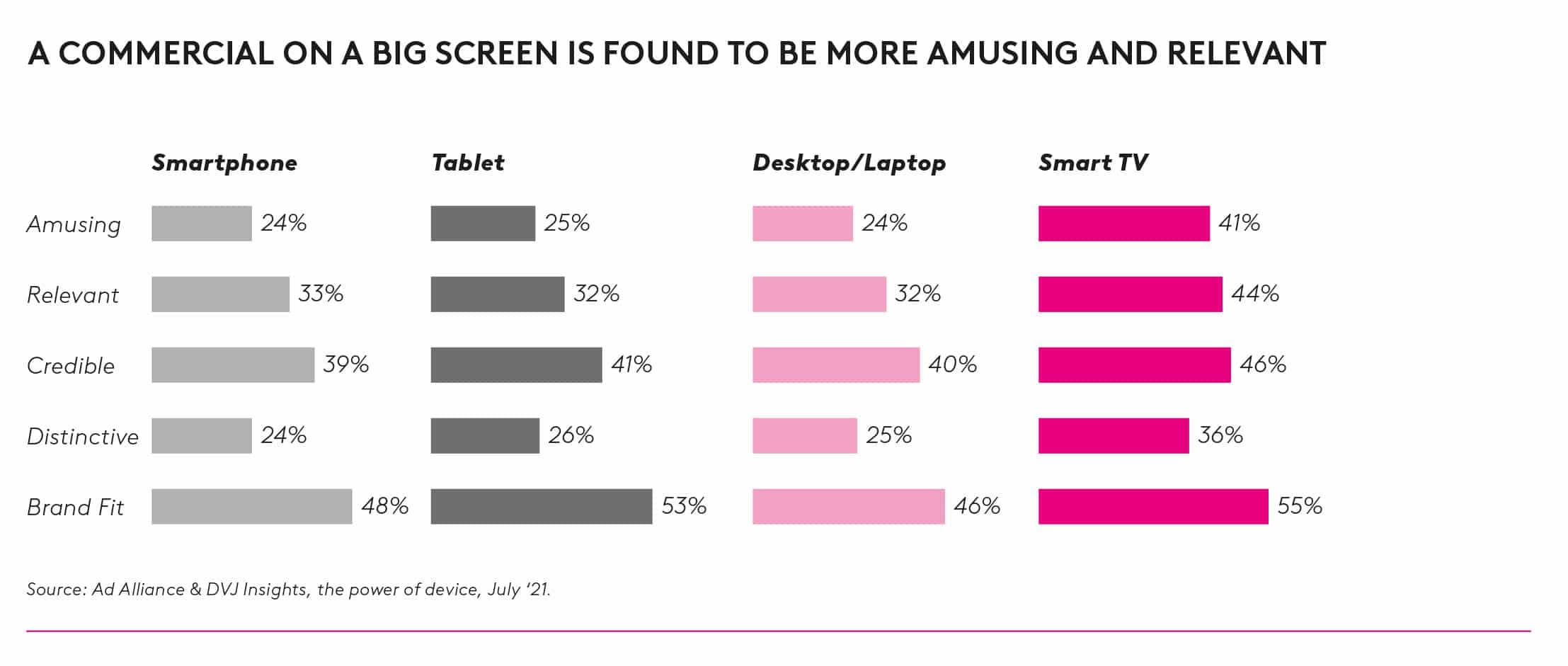
EEG and GSR were used to measure processing in the brain – EEG looked at brain activity whilst GSR investigated the amount of physical activation in response to content and advertising. Finally, a survey was used to measure the memory and appreciation of the adverts.
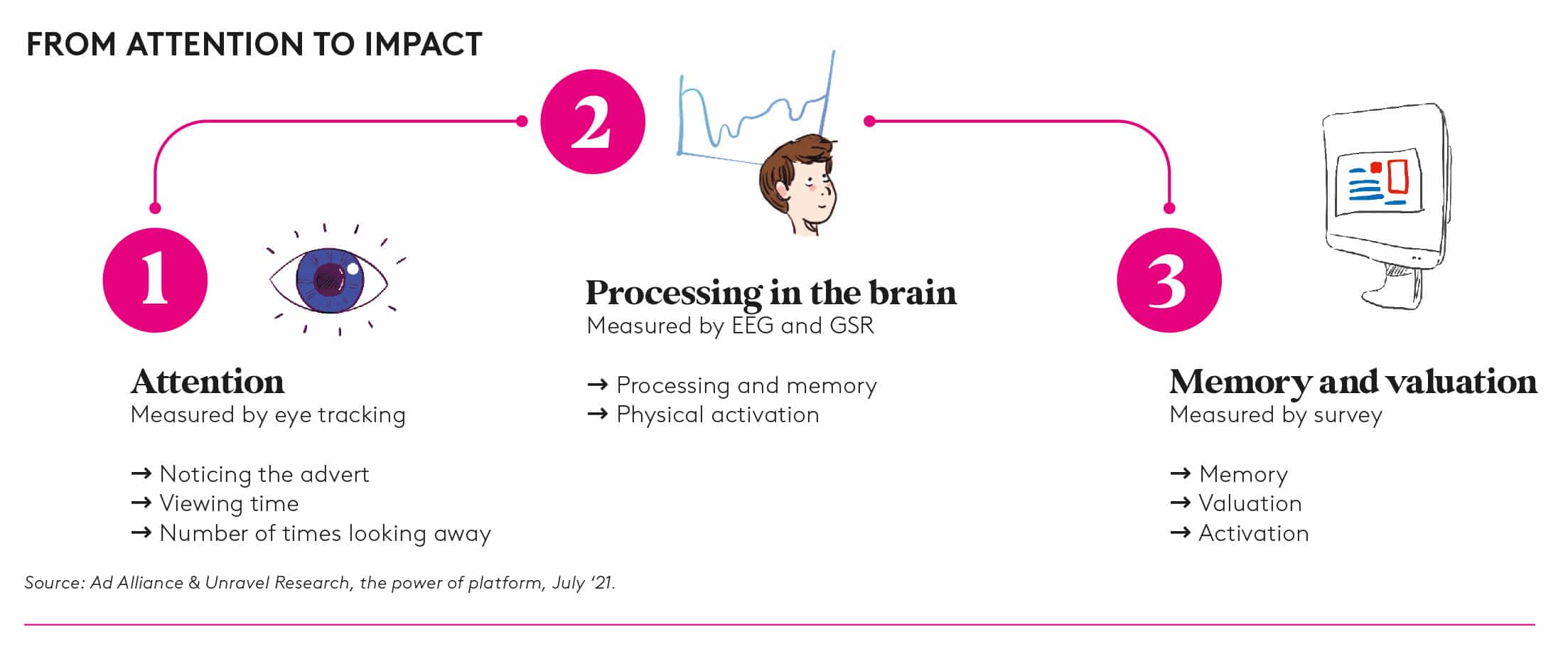
The results showed that there is more attention for commercials on Videoland compared to TV and YouTube, with 99% of adverts on Videoland being noticed compared to 89% and 86% on TV and YouTube respectively. Moreover adverts on Videoland hold the attention of the viewer for longest, for 78% of the total duration of the ad compared to 51% on YouTube.
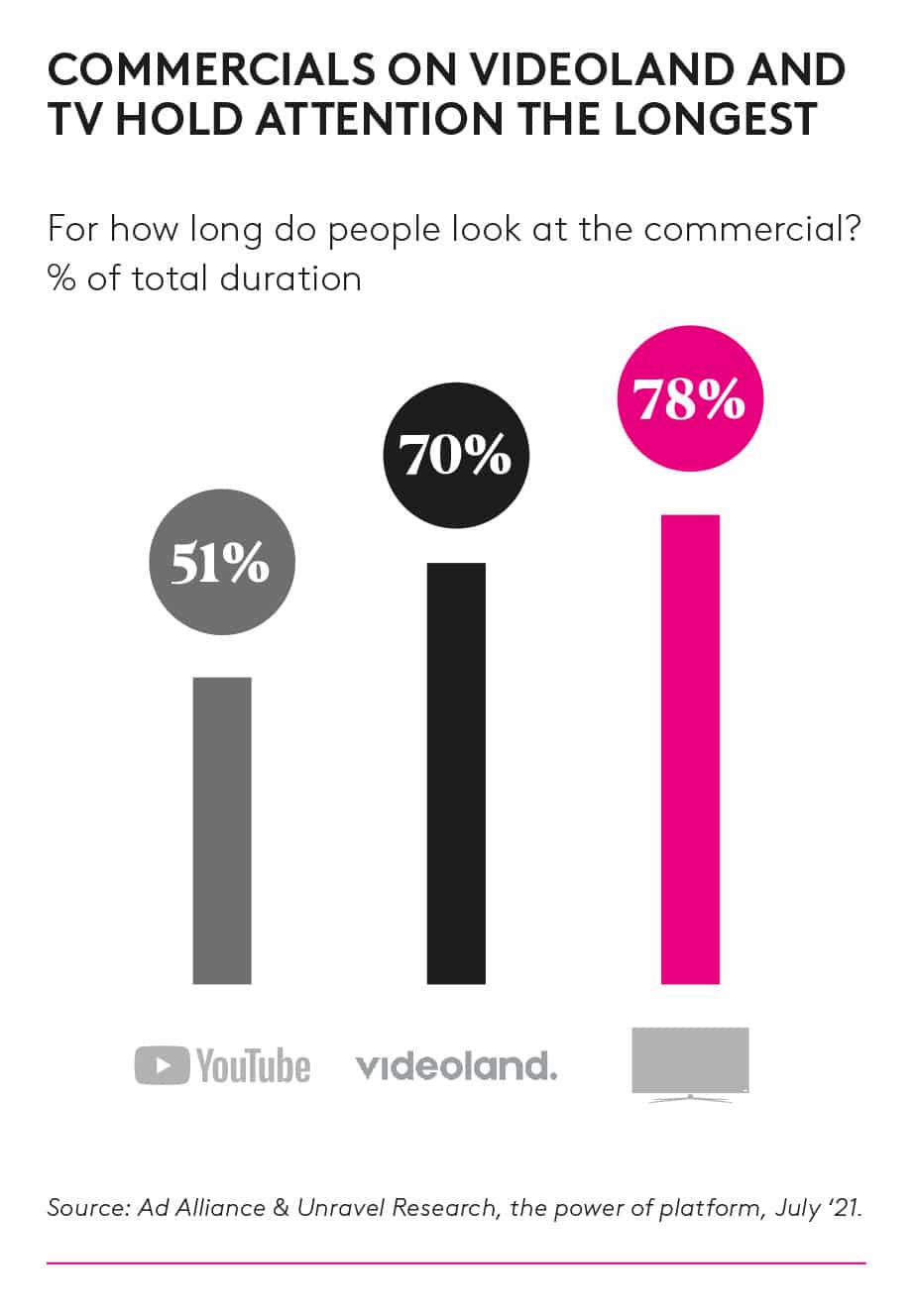
By contrast, TV provides optimal processing of commercials. Compared to TV, which is consumed in a more laid-back setting, Videoland and YouTube content produces more emotional activation which makes it more difficult to process the adverts. On YouTube, processing is at its lowest and cognitive overload is at its highest. This is also evident from the eye tracking results: with viewers looking away 1,0 times on average when an advert plays on YouTube compared to 0,4 times when watching TV. Finally, adverts viewed on Videoland have the highest chance of being remembered with 39% of adverts seen on this platform spontaneously recalled. Likewise, adverts on Videoland are more likely to incite action whilst adverts on YouTube are most often seen as an interruption of the viewing experience.
Overall it is clear that there are significant differences in the attention paid to adverts depending on the devices and platforms they are consumed on.






















